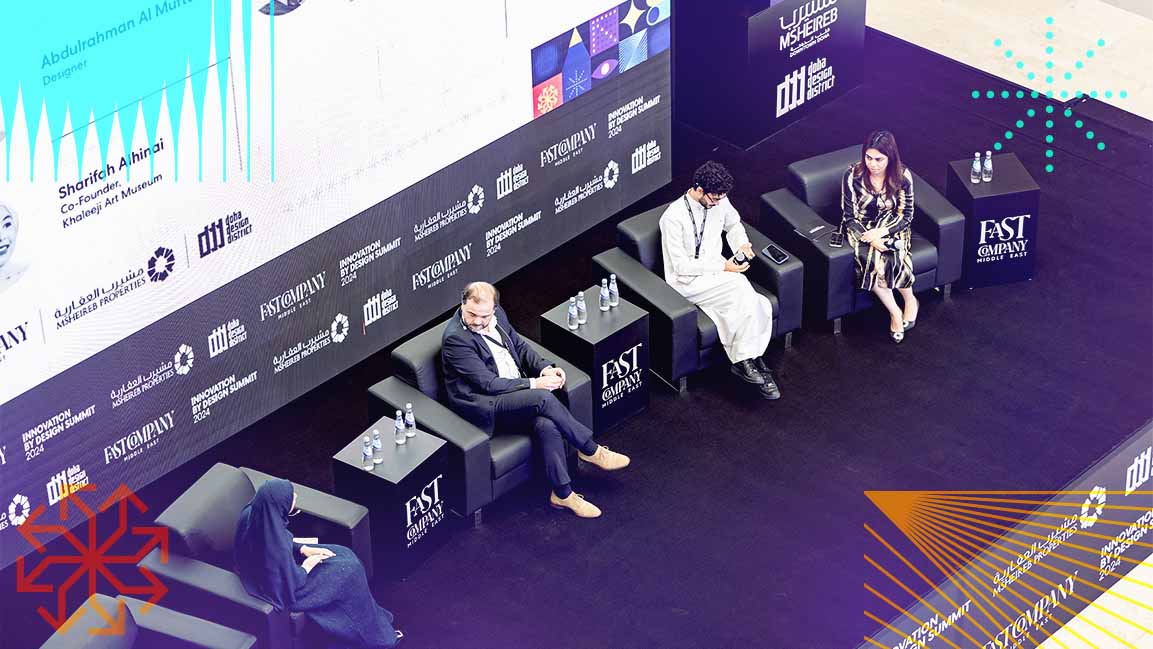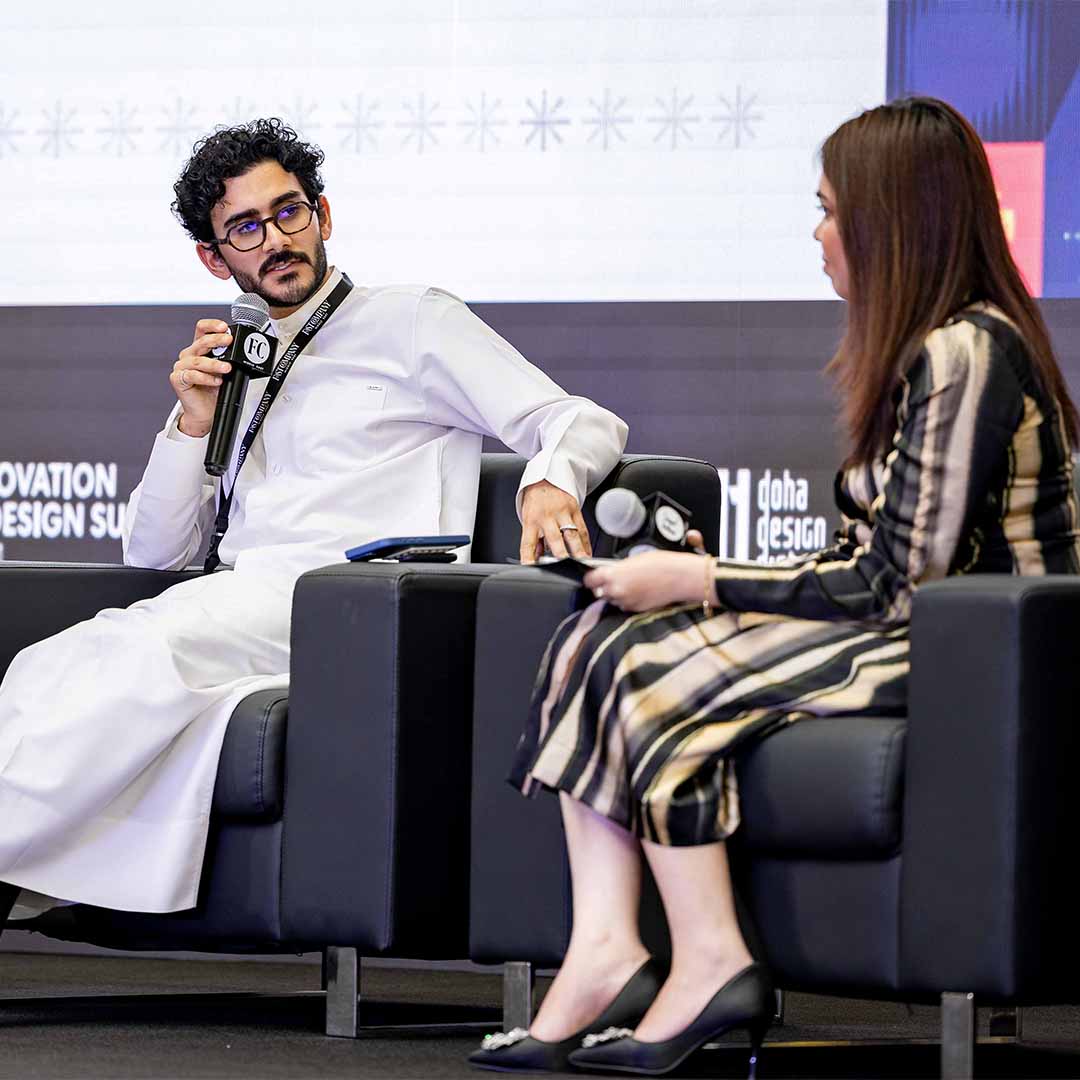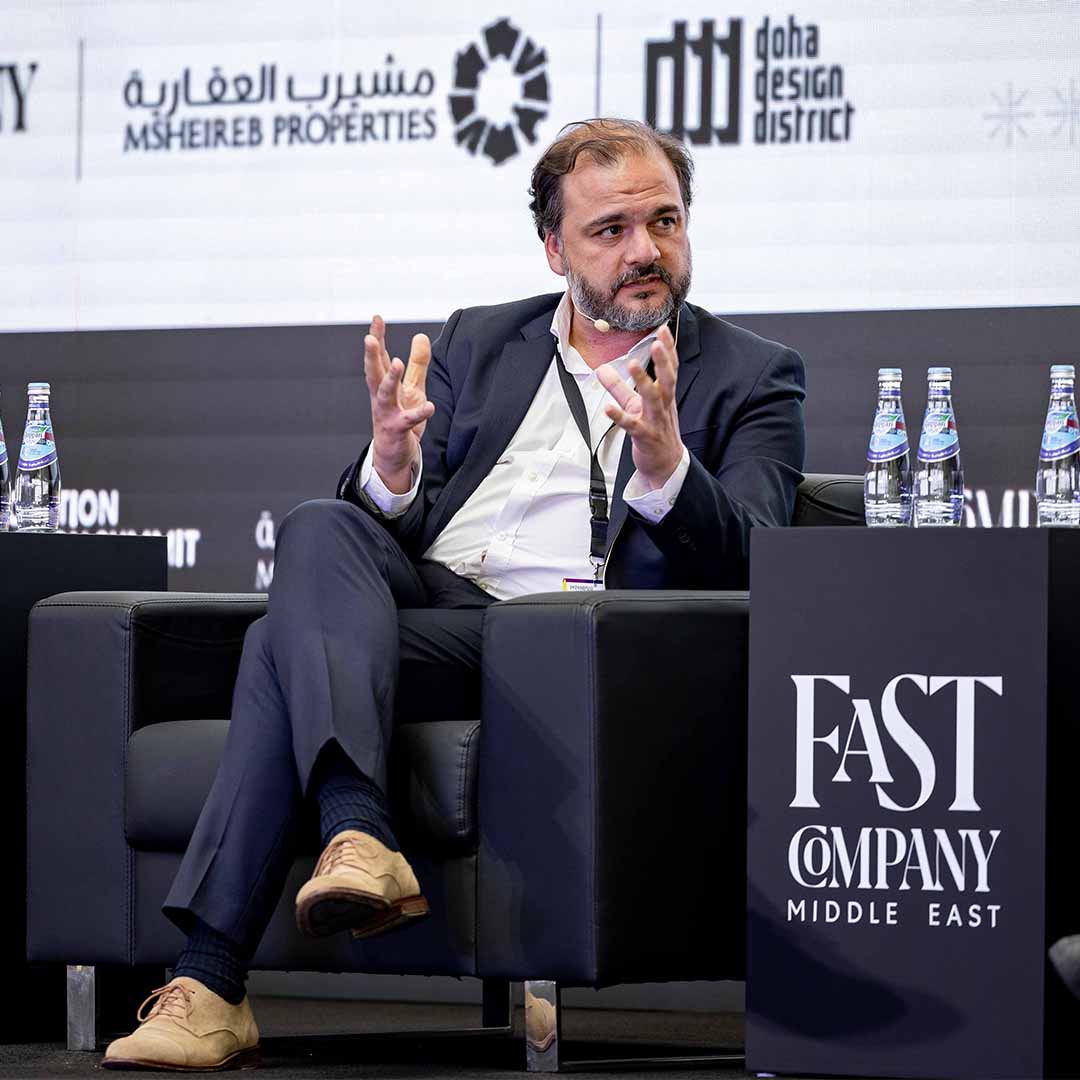- | 9:00 am
Can the Middle East’s design language lead to a global renaissance?
Amidst a cultural renaissance, the Middle East's design language is gaining momentum, blending tradition with innovation, ushering in a new era of cross-cultural creativity.

The Middle East’s design scene is experiencing a renaissance, showcasing the region’s rich cultural heritage in geometry, architecture, calligraphy, and craftsmanship through international events. With their innovative approaches, designers like Haya Al Adsani and Yasmin Mansour have propelled the essence of Middle Eastern design language to the forefront of global fashion consciousness, garnering attention on the world stage.
How is the evolution of its design language occurring? And how can a region, representative of several cultures and traditions, be well represented when translated to a canvas, runway, or creative platform?
During Fast Company Middle East’s Innovation by Design Summit, hosted in partnership with Msheireb Properties at Qatar’s Doha Design District, panelists Abdulrahman Al Muftah, designer, Miguel Viana, chief creative officer and co-founder of UnlockBrands, and Sharifah Alhinai, co-founder of Khaleeji Art Museum, discussed strategies to enhance the impact of the Middle East’s design language. They explored how a renaissance could stimulate a renewed emphasis on innovative collaborations and the preservation of cultural heritage.
A DEFINITIVE DESIGN LANGUAGE
What defines the Middle East’s design language? “It’s a bit difficult to define the design language of the GCC because it is ever-changing. What’s interesting about it is that the design language is ever evolving and keeps feeding into other cultures and itself,” said Al Muftah.
Reflecting on the Design Biennale, he highlighted craftsmanship as a unifying element across the region. “A common thread similar from across Morocco to Qatar is craftsmanship. We see craft as a language that is closely knit with design.”

(L-R) Abdulrahman Al Muftah, designer and Rachel Dawson, senior correspondent, Fast Company ME
Viana expressed his perspective as an outsider, characterized by a strong curiosity and humility in seeking to understand diverse cultures. He highlighted the region’s rich diversity, shaped over centuries by various influences. “You can sense the diversity across different countries within the region, influenced by the various historical epochs.” When delving into the region’s visual language, one encounters abundant elements such as floral motifs and geometric patterns, contributing to a cohesive design identity.

Miguel Viana, chief creative officer and co-founder, UnlockBrands
He also explained the ongoing evolution of this design language is ever present, recognizing that “time does not stop and everyone influences everyone.”
Another standout feature of the Middle East’s design language is calligraphy and typography. Despite this rich heritage of art and design, he also pointed to the challenge of presenting this cultural richness to the world, particularly when understanding unfamiliar languages and alphabets.
“What I’ve noticed in recent years is a trend toward merging what is traditional with what is contemporary, as well as blending what is Eastern with what is Western, which truly demonstrates who we are as a people. We are firmly rooted in our traditions, but we also have an amazing ability to adapt to our ever-changing and increasingly globalized world in our way,” said Alhinai.
Moreover, it emphasizes the undeniable Western influence on the region’s arts, fostering a multifaceted dialogue that persists on many levels. “We can talk about the Western influence on the film industry in India; we could talk about the Western influence on music in South Korea.” Agreeing with her, Al Muftah emphasized the impact of post-colonialism on the region’s art and design industry, including typography.
STRIKING THE RIGHT BALANCE
Similarly, Alhinai emphasized the diverse approaches taken by artists in the region to incorporate the influences of Eastern and Western cultures, sometimes achieving a harmonious balance and other times not. She found it fascinating to observe artists’ creative techniques to blend Eastern and Western elements and traditional and contemporary motifs, drawing inspiration from their rich heritage.
Citing the works of El Seed, a French Tunisian artist based in Dubai, known for his Arabic typography-based works ranging from sculptures to paintings, she illustrated his innovative approach of designing an installation in South Korea, where he translated a Korean poem into Arabic and used it as the basis for an art piece. She emphasized how Seed’s use of Arabic, a language often misunderstood or misrepresented, demonstrated its beauty and power to unite people across cultures.
Moving beyond the artistic realm, Viana addressed the distinct challenges encountered when collaborating with brands, especially in maximizing impact for both regional and global audiences. He emphasized the significance of striking a balance between integrating Arabic inspiration and ensuring the brand’s accessibility to a broader audience.
Moreover, he highlighted the necessity of creating bridges and connections between cultures, especially for countries like Qatar seeking to engage with the world through global events. “It’s crucial to guarantee your work resonates with locals and the world.”
He added, “When we developed the branding program for the FIFA World Cup in Qatar, our team, comprising designers, artists, and consultants from the region, engaged in a highly interactive process.”
A significant aspect of this endeavor was thorough research, which was essential for ensuring that the brand resonated authentically with the local culture.
Panelists identified key industries poised to elevate the region’s creative landscape, including the fashion industry, particularly in Qatar, where initiatives like M7 Fashion Trust Arabia are propelling artists onto the international stage, thereby intertwining pop culture and the arts, with film playing a significant role.
The region’s active role in international events would catalyze cultural exchange and innovation, offering opportunities to showcase the region’s design language on a global scale. Together, these industries hold promise in shaping a dynamic, inclusive narrative that celebrates the Middle East’s rich heritage and contemporary creativity.
In a following session, Manuel Lima, a designer and author, called attention to the recurring discrepancy between design’s noble intentions and its unintended consequences. He discussed the expanding influence of design presents opportunities and challenges, as it demands a heightened sense of responsibility. “Designers play a huge role in creating addictive experiences by exploiting the human mind for profit,” he added.
Further, he explored the downside of good design, which has contributed to societal issues like excessive consumption, addiction, and environmental degradation, raising questions about its ethical implications.
As the region embraces its heritage while integrating global influences, the Middle East’s design is poised to significantly impact the global stage, captivating audiences worldwide with its unique blend of tradition and modernity.








































